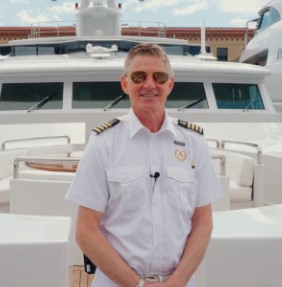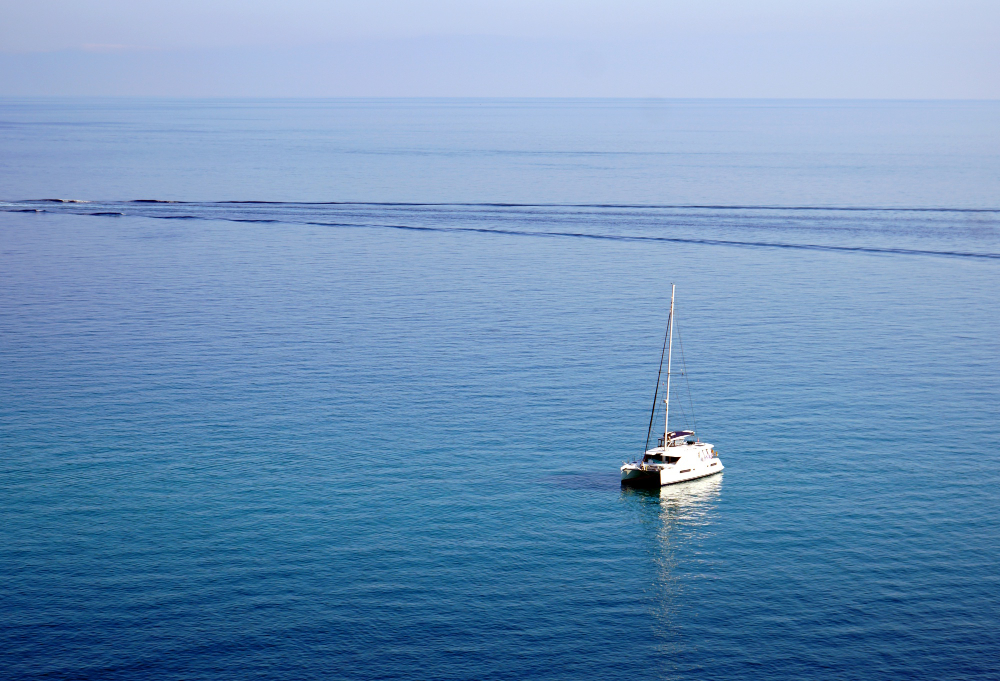As someone who has spent over 15 years navigating Canadian waters, I've witnessed firsthand how proper safety protocols and environmental consciousness go hand in hand to create exceptional charter experiences. The ocean demands respect, and those who approach it with appropriate caution and care are rewarded with adventures that exceed all expectations while preserving these precious ecosystems for future generations.
The Foundation: Safety as Environmental Stewardship
Many people view safety and environmental protection as separate concerns, but in maritime operations, they're fundamentally interconnected. A well-maintained vessel with properly functioning systems is far less likely to cause environmental damage through fuel spills, waste discharge, or emergency situations that could impact marine ecosystems.
When I conduct pre-charter safety briefings, I emphasize that every safety protocol serves a dual purpose: protecting our guests and protecting the waters we're privileged to explore. This perspective transforms routine safety procedures from mere regulatory compliance into meaningful acts of environmental stewardship.
Proactive Safety Culture
True maritime safety extends far beyond minimum regulatory requirements. At Haoskyer, we've developed what I call a "proactive safety culture" where every crew member and guest understands their role in maintaining not just personal safety, but the integrity of our marine environment.
Pre-Departure Protocols
Every charter begins with comprehensive safety and environmental briefings that cover far more than life jacket locations. We discuss weather patterns, local wildlife behavior, and how our activities might impact the marine environment. Guests learn to recognize signs of weather changes, understand why we maintain specific distances from marine mammals, and appreciate how their choices—from sunscreen selection to waste disposal—affect the ecosystems we're visiting.
Our vessel inspections include not just safety equipment checks, but also environmental systems verification. Waste water treatment systems, fuel containment measures, and bilge water monitoring equipment receive the same attention as life rafts and emergency beacons. This comprehensive approach ensures that environmental protection becomes as automatic as checking the weather forecast.
Dynamic Risk Assessment
Conditions on the water change constantly, and effective captains continuously reassess both safety and environmental factors throughout each charter. Wind shifts that create challenging sailing conditions might also disturb sensitive seabird nesting areas. Tide changes that affect anchorage security could also impact intertidal ecosystems that guests want to explore.
I teach my crew to consider these interconnected factors when making operational decisions. The question isn't just "Is this safe?" but "How do we accomplish our goals safely while minimizing our environmental impact?" This dual consideration often leads to creative solutions that enhance rather than compromise the charter experience.
Sustainable Operations in Practice
Sustainable yacht operations require systematic approaches that address every aspect of vessel management and guest services. Over the years, we've developed practices that significantly reduce our environmental footprint while maintaining the luxury experience our guests expect.
Fuel Efficiency and Alternative Energy
Modern yacht design and operational techniques can dramatically reduce fuel consumption without compromising performance or comfort. Our fleet incorporates hybrid propulsion systems that allow for silent, emission-free cruising in sensitive areas while maintaining the power needed for safety and extended range.
Solar panels and wind generators supplement traditional power sources, reducing generator runtime and the associated noise pollution that can disturb marine wildlife. Advanced battery management systems store renewable energy efficiently, allowing us to anchor in pristine locations without the constant hum of diesel generators that characterizes many charter operations.
Route planning incorporates fuel efficiency considerations alongside safety and guest experience factors. By understanding current patterns, wind forecasts, and tidal cycles, we can often reduce fuel consumption by 30-40% while actually improving the sailing experience through better timing and positioning.
Waste Management Excellence
Effective waste management aboard yachts requires systems thinking and guest education. We've eliminated single-use plastics throughout our operations, replacing them with reusable alternatives that often provide superior functionality. High-quality reusable water bottles, for example, keep beverages at optimal temperatures longer than disposable containers while eliminating plastic waste.
Our galleys feature comprehensive recycling and composting systems. Organic waste becomes compost for shore-based gardens, while recyclable materials are sorted and processed through certified facilities. Guests often express surprise at how easily they adapt to waste reduction practices when provided with convenient, well-designed systems.
Greywater and blackwater management exceeds regulatory requirements through advanced treatment systems that ensure discharged water meets or exceeds drinking water standards. While regulations allow certain overboard discharges in specific locations, our systems treat all waste water to the highest standards regardless of location.
Wildlife Interaction Guidelines
Canada's waters support incredible wildlife diversity, from massive whales to tiny seabirds, and charter guests rightfully want to experience these magnificent creatures. Responsible wildlife viewing requires understanding animal behavior, maintaining appropriate distances, and recognizing when our presence might cause stress or disruption.
Marine Mammal Protocols
Whale watching from charter yachts provides unparalleled opportunities for close observation, but these encounters must be managed carefully to avoid disrupting natural behaviors. We maintain minimum distances that exceed regulatory requirements—typically 200 meters for most whale species and 400 meters for endangered orcas.
More importantly, we read animal behavior constantly. Rapid direction changes, increased surface activity, or protective positioning around calves indicates stress, and we immediately increase distance or move away entirely. The most memorable wildlife encounters often occur when animals approach us out of curiosity rather than when we pursue them.
Our crew members complete specialized marine mammal awareness training that goes beyond basic regulations. Understanding feeding behaviors, migration patterns, and seasonal sensitivities allows us to position vessels for optimal viewing while minimizing impact on these magnificent creatures.
Seabird Conservation
Seabird colonies create spectacular viewing opportunities but require careful approach techniques to avoid disrupting nesting activities. Many species abandon nests when startled by human presence, and even brief disturbances during critical periods can cause chick mortality.
We maintain detailed databases of nesting colonies, breeding seasons, and approach protocols for different species. Colony visits are timed to avoid critical breeding periods, and we use landing techniques that minimize noise and movement. Guests receive briefings on appropriate behavior around seabirds, including movement restrictions and photography guidelines.
Guest Education and Engagement
The most effective environmental protection occurs when guests understand and embrace conservation principles rather than simply following rules. We've developed educational approaches that enhance rather than restrict the charter experience while building genuine appreciation for marine ecosystems.
Hands-On Learning
Many guests arrive with limited understanding of marine environments but leave as passionate advocates for ocean conservation. We facilitate this transformation through hands-on learning experiences that reveal the complexity and fragility of marine ecosystems.
Snorkeling in eelgrass beds reveals nursery areas where juvenile fish develop. Tide pool exploration demonstrates intricate predator-prey relationships and adaptation strategies. Plankton sampling using specialized nets shows guests the foundation of marine food webs that supports everything from tiny fish to massive whales.
These activities require minimal specialized equipment but create profound connections between guests and marine environments. When people understand how ecosystems function, they naturally make choices that support conservation.
Citizen Science Participation
Charter guests can contribute to genuine scientific research through citizen science programs that collect valuable data while enhancing the charter experience. Water quality monitoring, wildlife observation reporting, and marine debris documentation provide guests with meaningful ways to contribute to conservation efforts.
We partner with marine research institutions and conservation organizations to ensure data collection meets scientific standards. Guests receive training in proper sampling techniques and data recording, transforming vacation activities into genuine research contributions.
Technology and Innovation
Modern technology provides unprecedented opportunities for safe, sustainable yacht operations. Advanced weather routing software, satellite communication systems, and environmental monitoring equipment allow us to operate more efficiently while reducing environmental impact.
Navigation and Weather Systems
Integrated navigation systems combining GPS, radar, AIS, and weather data provide comprehensive situational awareness that enhances both safety and efficiency. Advanced weather routing software suggests optimal routes that minimize fuel consumption while avoiding adverse conditions.
Real-time satellite weather updates allow for proactive route adjustments that keep guests comfortable while reducing the environmental impact of fighting adverse conditions. These systems often identify weather windows that create exceptional opportunities for wildlife viewing or scenic photography.
Environmental Monitoring
Continuous environmental monitoring helps us understand our impact and identify opportunities for improvement. Water quality sensors track temperature, salinity, and dissolved oxygen levels, providing data that helps us select anchorages that minimize impact on sensitive ecosystems.
Noise monitoring equipment measures underwater sound levels, helping us understand how our operations might affect marine mammals that rely on acoustic communication. This data informs operational decisions about generator usage, anchorage selection, and approach techniques.
The Business Case for Sustainability
Sustainable operations aren't just environmentally responsible—they make excellent business sense. Fuel efficiency reduces operational costs. Waste reduction eliminates disposal fees. Preventive maintenance extends equipment life while reducing the risk of expensive breakdowns or environmental incidents.
More importantly, guests increasingly value environmental responsibility. Today's charter clients want to know that their vacation choices align with their values. Demonstrating genuine commitment to environmental protection attracts clients who appreciate quality and care in all aspects of the charter experience.
Future Challenges and Opportunities
Climate change presents new challenges for maritime operations while creating opportunities for innovation and leadership. Changing weather patterns require adaptive management strategies. Shifting wildlife distributions demand flexible itinerary planning. Rising sea levels affect traditional anchorages and shore access points.
These challenges also drive innovation. Alternative fuel technologies, advanced materials, and improved operational techniques continue evolving rapidly. Charter companies that embrace innovation and environmental leadership position themselves for long-term success while contributing to conservation solutions.
Personal Responsibility and Professional Pride
After 15 years at sea, I've learned that the ocean teaches humility while rewarding respect. Every day on the water reinforces my understanding that we're temporary visitors in environments that have existed for millions of years and support life forms we're only beginning to understand.
This perspective shapes every decision I make as a captain. Safety protocols protect not just my guests and crew, but the marine environments that make our industry possible. Environmental stewardship ensures that future generations can experience the same wonder and beauty that draws people to sea today.
The intersection of safety and sustainability isn't just operational best practice—it's professional responsibility and personal passion. When we approach maritime operations with appropriate respect for both human safety and environmental protection, we create experiences that transform guests into advocates and ensure that these incredible waters remain pristine for generations to come.



